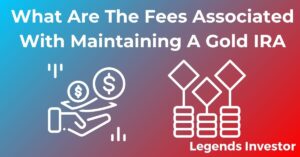Introduction to Gold Investments in an IRA
Investing in gold through an Individual Retirement Account (IRA) has become a popular strategy for many investors seeking to diversify their portfolios and protect against economic uncertainties. This comprehensive guide will delve into the various types of gold investments that can be included in an IRA, exploring the benefits and risks associated with each option. Whether you’re considering physical gold, gold ETFs, mutual funds, mining stocks, futures, options, or gold certificates, this article will provide the insights needed to make informed investment decisions.
Understanding Individual Retirement Accounts (IRAs)
The Appeal of Gold as an Investment in an IRA
IRAs are tax-advantaged investment accounts designed to help individuals save for retirement. They come in various forms, including traditional IRAs and Roth IRAs, each with its own tax benefits. Adding gold to an IRA can offer several advantages:
- Hedge Against Inflation: Gold has historically maintained its value, making it a reliable hedge against inflation and currency devaluation.
- Portfolio Diversification: Including gold can reduce overall portfolio risk by diversifying your assets.
- Safe Haven Asset: During economic downturns or geopolitical instability, gold often retains or increases in value, providing a safety net.
Overview of the Types of Gold Investments Permitted in IRAs
The IRS permits several types of gold investments within an IRA, each with specific requirements and considerations. These include:
- Physical gold (bars, coins, bullion)
- Gold Exchange-Traded Funds (ETFs)
- Gold mutual funds
- Gold mining stocks
- Gold futures and options
- Gold certificates
Diving Into the Gold Standard: Physical Gold
The Allure of Physical Gold: Bars, Coins, and Bullion
Physical gold remains a favored investment due to its tangible nature. Investors can include gold bars, coins, and bullion in their IRAs. Popular IRA-eligible gold coins include the American Gold Eagle, Canadian Gold Maple Leaf, and Austrian Gold Philharmonic.
Purity Requirements for IRA-Eligible Gold
The IRS mandates specific purity standards for physical gold in IRAs:
- Gold must be at least 99.5% pure (24 karats).
- Accepted forms include certain coins and bullion bars that meet these purity standards.
Storage and Custodian Regulations for Physical Gold in an IRA
Physical gold in an IRA must be stored in an IRS-approved depository. This ensures the security and proper handling of the precious metal. Additionally, an IRA custodian must oversee the account, ensuring compliance with IRS regulations.
Gold ETFs: Ease of Trading and Diversification
Understanding Gold Exchange-Traded Funds (ETFs)
Gold ETFs are investment funds that track the price of gold. They are traded on stock exchanges, offering liquidity and ease of trading. ETFs represent a convenient way to gain exposure to gold without the need for physical storage.
Advantages of Investing in Gold ETFs Within an IRA
- Liquidity: Gold ETFs can be bought and sold easily on stock exchanges.
- Diversification: ETFs often include a mix of gold-related assets, providing broader exposure to the gold market.
- Lower Costs: Investors avoid the storage and insurance costs associated with physical gold.
Considerations and Limitations of Gold ETFs for Retirement Planning
While gold ETFs offer numerous benefits, they also come with some limitations:
- Management Fees: ETFs charge management fees that can reduce returns over time.
- Market Risk: The value of ETFs can fluctuate with the stock market, introducing additional risk.
- No Physical Ownership: Investors do not own the actual gold, which may be a drawback for those seeking tangible assets.
Gold Mutual Funds: Professional Management Advantages
Exploring Gold Mutual Funds
Gold mutual funds pool investors’ money to invest in a diversified portfolio of gold-related assets, including mining stocks, gold futures, and physical gold. These funds are managed by professional fund managers.
Benefits of Expert Management in Gold Investing
- Expertise: Professional fund managers have the knowledge and experience to make informed investment decisions.
- Diversification: Gold mutual funds offer diversified exposure to the gold market, reducing individual asset risk.
- Convenience: Investors can benefit from gold investments without the need to manage individual assets.
How Gold Mutual Funds Fit Into an IRA Portfolio
Gold mutual funds can complement other assets in an IRA, providing diversification and professional management. They are a suitable option for investors seeking indirect exposure to gold with lower risk compared to physical gold.
Gold Mining Stocks: Leverage and Potential Growth
Investing in the Gold Industry Through Mining Stocks
Gold mining stocks represent shares in companies that extract and produce gold. Investing in these stocks provides exposure to the gold market and the potential for high returns.
The Leverage Effect of Gold Mining Stocks in an IRA
Gold mining stocks offer leverage because their value often increases more than the price of gold itself when gold prices rise. This can lead to significant gains in a bullish gold market.
Risks and Rewards Associated With Gold Mining Companies
While gold mining stocks offer potential for high returns, they also come with risks:
- Operational Risks: Mining companies face risks related to production, labor, and regulatory issues.
- Market Volatility: The value of mining stocks can be highly volatile, influenced by gold prices and broader market trends.
- Company Performance: The success of mining stocks depends on the performance of individual companies, which can vary widely.
Gold Futures and Options: A Sophisticated Approach
Overview of Gold Futures and Options
Gold futures and options are derivative contracts that allow investors to speculate on the future price of gold. Futures involve a commitment to buy or sell gold at a predetermined price on a specific date, while options provide the right, but not the obligation, to buy or sell gold.
Potential Benefits of Gold Derivatives in an IRA
- Leverage: Futures and options provide significant leverage, allowing investors to control large positions with a smaller investment.
- Flexibility: These instruments offer flexibility in terms of strategy and risk management.
Considering the Risks and Complexities of Futures and Options
Investing in futures and options is complex and involves substantial risk. It requires a deep understanding of the market and risk management techniques. These investments are generally suited for experienced investors.
Gold Certificates: The Paper Gold Investment
What Are Gold Certificates and How Do They Work?
Gold certificates represent ownership of gold without the need for physical possession. Issued by banks, these certificates can be traded like securities.
Pros and Cons of Including Gold Certificates in Your IRA
Pros:
- No Storage Issues: Gold certificates eliminate the need for physical storage and associated costs.
- Ease of Transfer: Certificates can be easily transferred or sold.
Cons:
- Counterparty Risk: The value of gold certificates depends on the issuer’s reliability.
- Lack of Tangibility: Investors do not own the physical gold, which may be a drawback for some.
Verification and Authenticity Concerns for Gold Certificate Investors
Ensuring the authenticity and reliability of gold certificates is crucial. Investors should choose reputable issuers and verify the certificates’ legitimacy.
Assessing the Risks: The Flip Side of Gold IRA Investments
Understanding the Volatility of the Gold Market
Gold prices can be highly volatile, influenced by factors such as economic conditions, geopolitical events, and market sentiment. This volatility can impact the value of your Gold IRA.
Factors That Influence the Price of Gold Investments
Several factors affect gold prices, including:
- Inflation Rates: Higher inflation typically drives gold prices up.
- Currency Fluctuations: Changes in currency values can impact gold prices.
- Market Demand: Demand from investors, industries, and central banks influences gold prices.
Diversification Strategy to Mitigate Risks in a Gold IRA
To mitigate risks, it’s essential to diversify your Gold IRA with a mix of asset classes. This can help balance potential losses in gold with gains in other investments.
Strategizing Your Gold IRA for Long-Term Success
Balancing Gold With Other Assets in Your IRA
A balanced portfolio includes a mix of assets such as stocks, bonds, real estate, and precious metals. Allocating only a portion of your IRA to gold ensures diversification and reduces risk.
Tax Considerations for Gold Investments in an IRA
Gold investments in an IRA have specific tax implications. It’s important to understand how these investments are taxed and plan accordingly to minimize tax liabilities.
Keeping Up With Regulations and Making Informed Decisions
Staying informed about IRS regulations and market trends is crucial for managing your Gold IRA. Regular consultations with financial advisors can help you make informed decisions and adapt to changes.
Conclusion: Is Gold Right for Your IRA?
Investing in gold through an IRA can provide diversification and protection against economic uncertainties. However, it’s essential to understand the risks and complexities involved. By exploring various gold investment options and conducting thorough research, you can make informed decisions that align with your retirement goals. Consulting with financial professionals can provide additional insights and help you navigate the intricacies of gold investments in an IRA, ensuring long-term success and a secure retirement.



